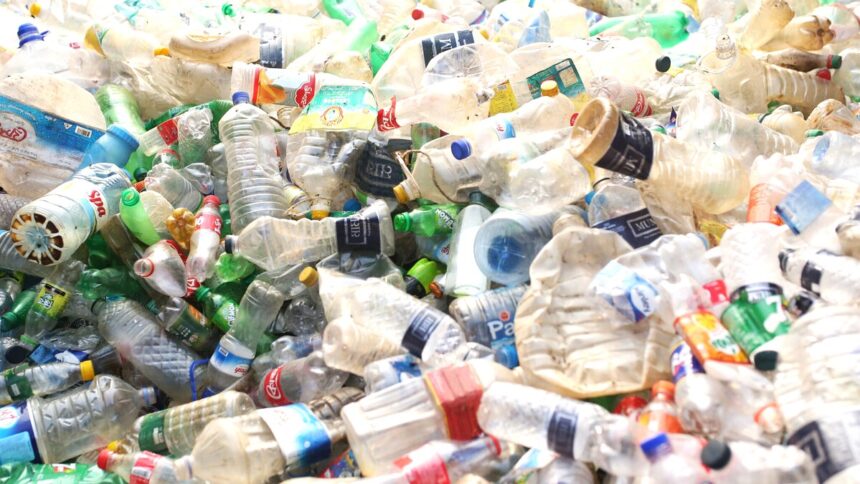It’s amazing to think that two unlikely nonpartisan American politicians, Republican U.S. Representative Pete McCloskey of California and Democratic U.S. Senator Gaylord Nelson of Wisconsin, came up with the idea and started the yearly celebration of Earth Day, which is being observed on this day for the 55th time.
The Earth Day website’s “history” section serves as a potent reminder of both how different that era was from our own in many ways—the anti-Vietnam War movement, for example, played a key role in the event’s beginning—and how similar our two eras are in other ways, too—an era beset by issues such as “oil spills, polluting factories and power plants, raw sewage, toxic dumps, pesticides, freeways, the loss of wilderness and the extinction of wildlife” and one in which young people were deeply concerned about their future well-being.
The movement gained momentum under Hayes’s leadership and that of the team he assembled, according to the website, and by the time it was officially launched on April 22, 1970, “Twenty million Americans, or 10% of the country’s entire population at the time, staged protests in the streets, parks, and auditoriums against the effects of 150 years of industrial progress, which had left a mounting legacy of grave consequences for human health.”
The terrible threat posed by environmental degradation is more greater now than it was in 1970, as people celebrate Earth Day 2024 all across the planet. The current generation has its work cut out for it when it comes to issues like the climate emergency and the increasingly extreme weather patterns it is causing, sea level rise and desertification, the extinction of species worldwide, water and air pollution, and the proliferation of dangerous “forever chemicals” like PFAS.
The global “60X40 movement,” which aims to eliminate global plastic output by 60% by the year 2040, and the plastics epidemic are two particularly pressing issues that receive special focus on the Earth Day website in 2024.
Listed below are a few of the crucial details found:
The total amount of plastic manufactured since plastic was first introduced in 1950 is 9.1 billion tons.
Seventy-nine percent of all plastic ever made is still in the environment or in landfills.
Americans buy 50 billion plastic water bottles annually, or around 156 bottles per person.
An estimated 5 trillion plastic bags are used annually worldwide.
Americans toss away 25 billion Styrofoam coffee cups annually.
The annual quantity of plastic that ends up in the world’s seas is 14 million tons, with a large portion of it being hazardous microplastics that
The latest estimate of plastic tons in the world’s seas is between 75 and 199 million.
The year 2050 is predicted to come when the weight of all plastic in the world’s oceans would surpass the weight of all fish in the waters.
The average annual amount of microplastic particles that each American consumes from their drinking water is about 70,000.
The quantity of plastic pollution that contaminates soil and streams and makes its way into the food chain when animals unintentionally consume it is up to 23 times more on land than it is in the ocean.
The projected removal of microplastics from drinking water using biologically-active slow sand filters, which are used in certain water treatment plants for decontamination, is 99.9%.
By 2040, the quantity of plastic that enters the ocean each year may be decreased by 80% by using current methods to cut back on single-use plastic use and switching to more environmentally friendly options.
Even if climate change poses an existential threat to civilization, some of the most concerned individuals about the environment are promoting hope on Earth Day 2024, which is coming up on Monday.
A lot of positive things have happened in response to the climate crisis, they claim: significant progress in mitigating the effects of climate change, years of effort that have prevented other environmental catastrophes, and the knowledge that optimism can inspire more action.
It’s a common misconception that not much has changed in the fifty years since Earth Day. The belief that environmental action is futile and that our current situation is worse than it was in the 1970s was expressed by Hannah Ritchie, a senior researcher at the University of Oxford in the United Kingdom who focuses on sustainability in connection to climate change.
This is not at all the case.Technological advancements that were climate-friendly ten years ago would have appeared unthinkable today. Moreover, mankind has encountered and resolved three significant man-made global environmental problems in the last 50 years.
Climate change is another issue that some climate experts believe should be included on this Earth Day.
Although that reality is still quite some distance off, we’ve come a long way. Chief scientist of The Nature Conservancy and distinguished professor of climate science at Texas Tech University Katharine Hayhoe said it’s as if mankind needs to scale the highest peak in the planet.
The most affordable electricity on the globe comes from solar and wind power.Most conversations on heating and cooling mention heat pumps. Nowadays, most people use electric automobiles.
The Biden administration announced $7 billion in grants on Monday to give solar electricity to over 900,000 houses in low-income and disadvantaged neighborhoods, adding even more support for climate-friendly projects. According to the White House, over the next 25 years, the president’s measures will save more than $350 million in power bills year, or almost $400 per home.
Global CO2 emissions may reach a high in the upcoming year
When contemplating the dire news regarding the amount of carbon dioxide in Earth’s atmosphere, which is the primary driver of global warming, it is crucial to keep that history in mind.
At 420 parts per million, they reached the highest peak in human history last year. Prior to the Industrial Revolution, there were only 280 parts per million. Global temperatures have increased by around 2 degrees throughout that period.
However, there is another development that is extremely encouraging but receives less attention. Based on a scenario based on existing policy settings, experts, including the International Energy Agency, predict that global carbon dioxide emissions will peak by 2030 at the latest.
That indicates that 2023 was most likely the year with the largest emissions of greenhouse gases ever, and that the amounts will only decline from this point on.
Even if it won’t completely offset the CO2 that has been added to the Earth’s atmosphere since the middle of the 1700s, it’s still a significant step forward that demonstrates how the energy shift is well under way.
“There is no stopping the global shift to clean energy,” stated IEA Executive Director Fatih Birol in a statement from the previous year. “The question isn’t whether it will happen, but rather, how soon.”
Nevertheless, present emission levels are one-third over what is required to keep global warming to 2.7 degrees. Thus, a considerable reduction in world per capita emissions is still required. However, Ritchie noted that progress is being done, even though it’s not always obvious to the wider public.
Read More: Dark Circles: Beyond sleep, uncover 8 main causes of dark under-eye circles





